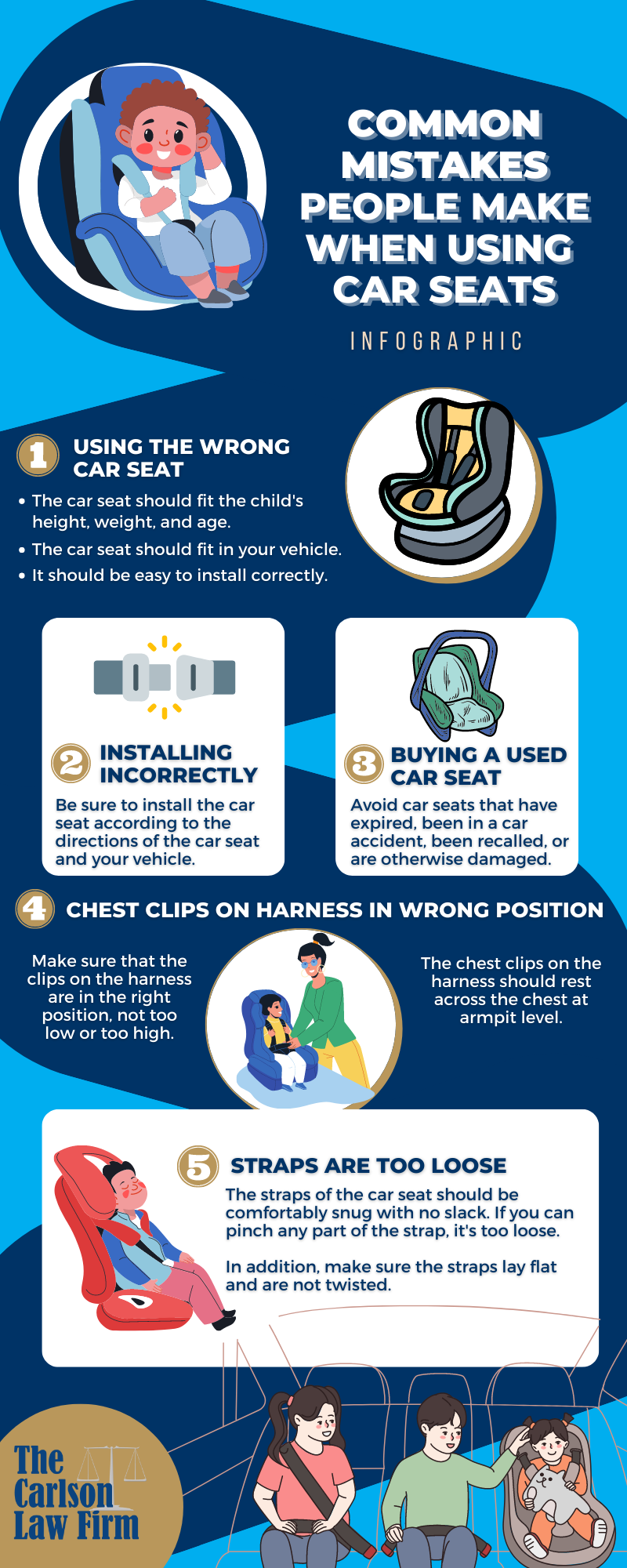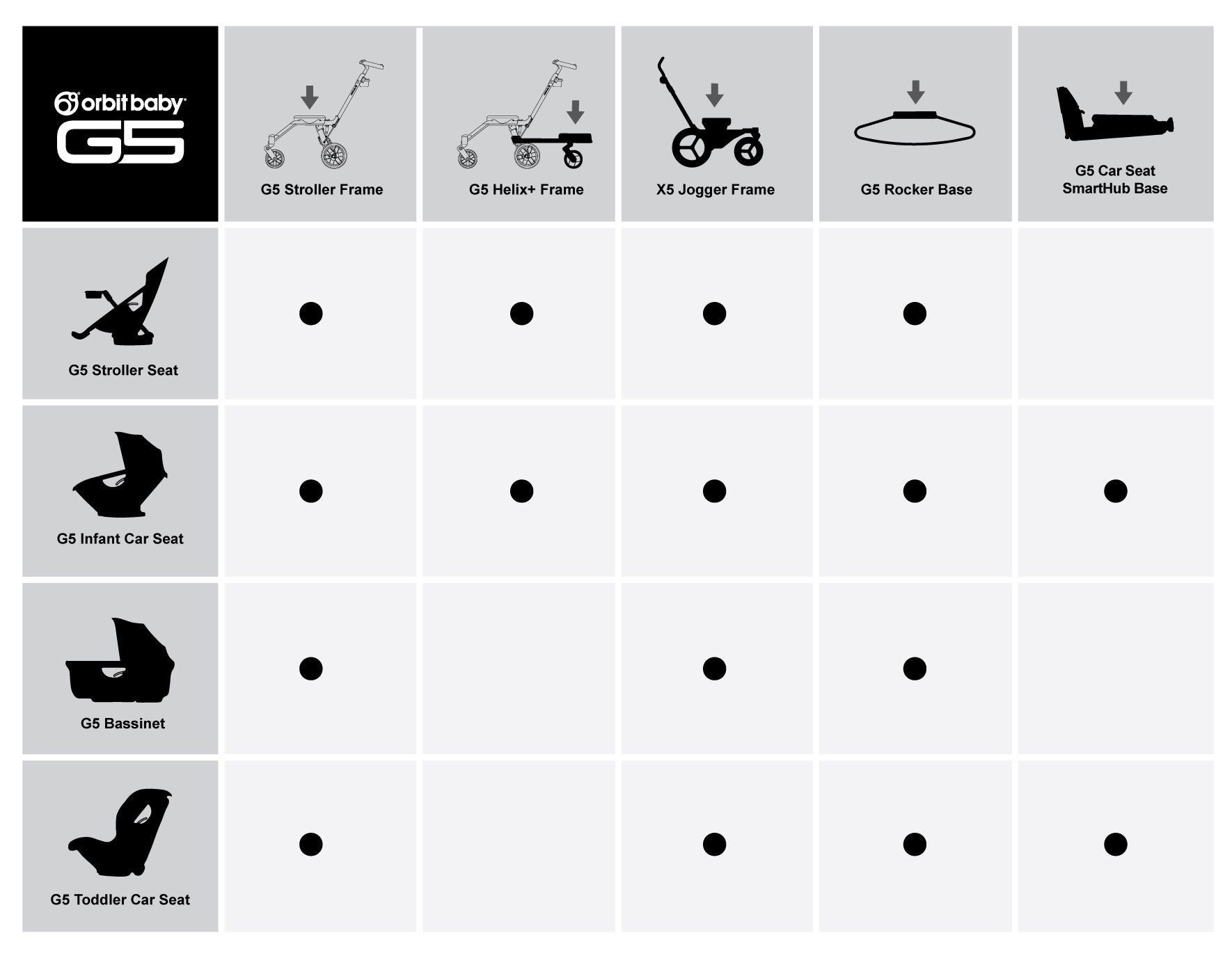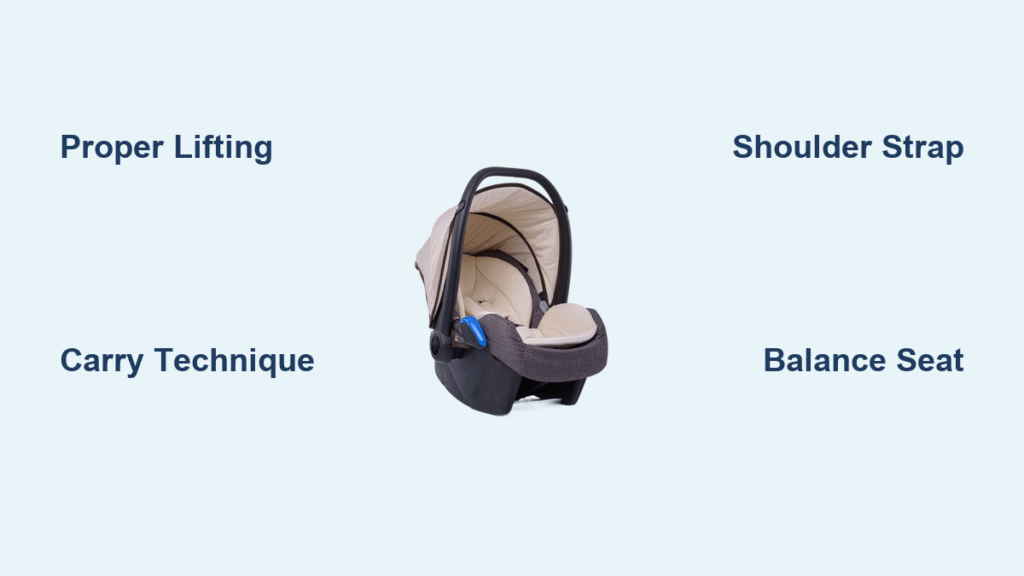Carrying an infant car seat can feel like a daily workout, especially when you’re juggling a sleeping baby, groceries, or just trying to get from the parking lot to the store without straining your back. If you’ve ever felt that awkward tug on your arms or worried about dropping the seat, you’re not alone—millions of parents face this challenge. The good news? Learning how to carry an infant car seat properly isn’t just about convenience; it’s a quick fix that prevents injuries and keeps your little one secure. With the right technique, like using your core and a firm grip, you can make it effortless in under a minute.
In this comprehensive guide, we’ll go beyond the basics to cover everything from essential tools and preparation steps to detailed carrying methods tailored for different scenarios. Whether you’re new to parenthood or just refining your routine, you’ll discover multiple ways to carry safely, common pitfalls to avoid, and pro tips for long-term ease. By the end, you’ll feel confident handling your infant car seat like a pro, reducing stress and protecting both you and your baby.
Why Proper Carrying Technique Matters for Infant Car Seats
Before diving into the how-to, it’s crucial to understand the stakes. Infant car seats are bulky—typically weighing 7-12 pounds empty, plus up to 20 pounds with a baby inside—and they’re designed for safety in vehicles, not handheld transport. Poor carrying habits can lead to back strain, shoulder pain, or even accidents if the seat slips. According to the American Academy of Pediatrics (AAP), improper handling contributes to parental injuries, while secure carrying ensures the baby’s harness remains intact and the seat’s base doesn’t shift.
Ergonomically, your body is built to lift from the legs, not the arms, so using the wrong method overloads your spine and upper body. This guide focuses on how to carry an infant car seat to distribute weight evenly, minimizing risks. Plus, with rising awareness of parental wellness, mastering this skill can prevent the chronic aches that sideline many caregivers.
Essential Tools and Accessories for Carrying an Infant Car Seat

You don’t need a ton of gear to carry safely, but the right accessories can make a world of difference. Start with what you likely already have: the car seat itself, which usually features a top handle for gripping. For enhanced support, consider add-ons that turn carrying into a breeze.
Here’s a quick rundown of recommended items:
| Item | Quantity | Specifications |
|---|---|---|
| Car Seat Handle | 1 (built-in) | Sturdy, ergonomic design; ensure it’s unlocked and rated for the seat’s weight (check manual for models like Graco SnugRide or Chicco KeyFit). |
| Carrying Strap | 1 | Adjustable shoulder strap (e.g., Skip Hop or DockATot brands); fits over car seat handle, distributes weight like a backpack; length 40-50 inches for most adults. |
| Diaper Bag with Clips | 1 | Multi-pocket bag with car seat attachments (e.g., Itzy Ritzy); holds essentials without extra load on arms. |
| Non-Slip Gloves | 1 pair | Grippy material for wet or cold conditions; optional for better handle control. |
| Portable Stroller Frame | 1 | Lightweight click-in frame (e.g., Summer Infant); alternative for longer distances, weighs under 10 pounds. |
Budget tip: A basic carrying strap costs $15-30 and pays for itself by reducing strain. Always verify compatibility with your car seat model via the manufacturer’s site, like Peg Perego or Evenflo, to avoid voiding warranties.
Preparation Steps Before Carrying Your Infant Car Seat
Preparation is key to safe carrying—rushing can lead to fumbles or discomfort. Allocate 2-3 minutes before each lift to set yourself up for success.
Safety Checks for Baby and Seat
First, ensure your baby is securely harnessed. The AAP recommends the harness snug against the chest (no more than one finger’s width of slack) and the clip at armpit level. Double-check the seat’s level indicator bubble if it’s a model with one, and confirm no loose items are inside that could shift during carry.
Warning: Never carry the seat by the harness straps or base edges—these aren’t designed for lifting and could snap under weight.
Body Positioning and Warm-Up
Stand tall with feet shoulder-width apart to engage your core. If you’re sore from previous carries, do a quick 30-second warm-up: roll your shoulders back and bend at the knees a few times. Dress for the weather—layer up in cold climates to avoid numb hands slipping on the handle.
For multi-taskers, clear your path: Scan for obstacles like curbs or crowds. If carrying other items, prioritize the car seat in your dominant hand or across your body.
Environmental Considerations
Assess the terrain. On uneven surfaces like gravel parking lots, opt for shorter carries or use a stroller frame. In rain, cover the seat with a waterproof canopy to keep grips dry. Time estimate: These prep steps take about 1-2 minutes but prevent mishaps that could add hours to your day.
Step-by-Step Guide: How to Carry an Infant Car Seat
Now, the core of how to carry an infant car seat—broken into phases for clarity. We’ll cover three methods: basic handle carry (quickest for short trips), shoulder strap method (for medium distances), and two-handed support (for heavy or uneven loads). Practice without baby first to build muscle memory.
Phase 1: Basic Handle Carry (For Short Distances, 1-5 Minutes)
This is the go-to for quick errands, ideal for seats like the Britax B-Safe.
-
Position Yourself: Kneel or squat beside the car seat in the vehicle. Place one hand on the top handle (ensure it’s in the “carry” position—upright and locked).
-
Lift with Legs: Grip firmly with your dominant hand, palm up. Use your other hand to steady the base if needed. Bend your knees, keep your back straight, and lift by pushing through your heels. Rise slowly to standing.
-
Balance and Walk: Hold the seat at waist level, elbow slightly bent, so the bottom faces outward (protecting baby’s head). Keep it close to your body—about 6 inches from your hip—to reduce arm strain. Walk with short steps, avoiding swings.
-
Set Down Safely: To lower, reverse the lift: Squat first, then place the seat base flat. Time: 10-20 seconds per lift.
Pro Tip: If the handle feels wobbly, inspect for wear; replace if it’s over 5 years old per CPSC guidelines.
Phase 2: Shoulder Strap Method (For Medium Distances, 5-15 Minutes)
Perfect for airport treks or store runs, this distributes weight like a purse. Works well with add-on straps for seats like the Maxi-Cosi Mico.
-
Attach the Strap: Loop the adjustable strap over the car seat handle, securing it tightly (follow strap instructions—usually a simple buckle). Adjust length so the seat hangs at hip height when shouldered.
-
Secure and Lift: With baby inside, lift as in Phase 1 but slide the strap over your shoulder (non-dominant side for balance). The seat should rest against your side, with the handle padded against your body.
-
Maintain Posture: Stand upright, core engaged. Swing your free arm naturally for counterbalance. If carrying a bag, clip it to the seat’s side for even load.
-
Adjust on the Go: If it shifts, pause and re-tighten. For stairs, hold the railing and carry in front. Time: Setup takes 1 minute; carrying feels 50% lighter.
Important: Test the strap’s weight limit (usually 25-35 pounds total) before use. Avoid if your baby is over 6 months, as seats expire around then.
Phase 3: Two-Handed Support Carry (For Heavy Loads or Challenges)
Use this for newborns in heavier seats (e.g., Nuna Pipa) or if one arm is occupied. It’s more advanced but safer for longer hauls.
-
Grip Setup: One hand on the top handle, the other supporting the base underside (near the wheels, avoiding sharp edges).
-
Lift Technique: Squat low, lift with both arms in unison—handle hand pulls up, base hand pushes. Keep elbows tucked to your sides for stability.
-
Transport Mode: Hold at chest level, seat angled slightly forward. Shift weight side-to-side every 30 seconds to avoid fatigue. For doors or turns, pivot your whole body.
-
Descent: Lower base first, then release the handle. Time: 15-30 seconds to start, builds endurance over time.
If steps don’t work (e.g., seat feels unstable), switch to Phase 1 and take breaks every 100 feet.
Common Mistakes and Troubleshooting When Carrying Infant Car Seats

Even pros slip up—here’s how to fix it. A top error is arm-lifting without bending knees, causing back tweaks; solution: Retrain with empty seat drills (5 reps daily).
If the seat swings, it’s often loose harness—recheck clips. For sweaty hands in heat, use gloves or powder for grip. If pain persists after proper form, it might indicate a deeper issue like car seat misalignment; consult a certified technician via Safe Kids Worldwide.
Troubleshooting table for quick fixes:
| Issue | Cause | Fix |
|---|---|---|
| Arm Fatigue | Holding too high | Lower to waist; use strap. |
| Seat Slipping | Wet handle | Dry thoroughly; add grip tape. |
| Back Strain | Poor posture | Core exercises; limit to 10-min carries. |
| Baby Fussing | Bumpy ride | Cushion with blanket; steady gait. |
Pro Tips for Effortless Infant Car Seat Carrying
Elevate your game with these 7 expert insights:
– Core Strength Boost: Incorporate 10-minute planks or yoga into your routine—parents who do report 30% less strain (per Mayo Clinic studies).
– Avoid Overloading: Never dangle keys or bags from the handle; it unbalances the load and risks scratches.
– Seasonal Tweaks: In winter, warm the handle with mittens to prevent frostbite on tiny fingers.
– Team Up: For long trips, alternate with a partner every 5 minutes to share the 20+ pound load.
– Upgrade Smartly: Invest in rotating-handle seats (e.g., Cybex Aton) for 360-degree ease.
– Daily Maintenance: Wipe handles weekly with mild soap to keep grips non-slip.
– Mind the Weight Limit: Most seats max at 30-35 pounds; transition to convertible models around 9 months.
Steer clear of carrying while texting—distraction causes 20% of parental slips, per CDC data.
When to Seek Professional Help for Car Seat Carrying
While most issues are DIY, call in experts if chronic pain hits (e.g., shooting arm discomfort) or if your seat shows damage like cracks. Signs: Persistent imbalance or if baby exceeds weight limits.
Look for certified Child Passenger Safety Technicians (CPSTs) via NHTSA’s locator tool—they inspect for $20-50. Costs for strap repairs: $10-20; full seat replacement: $150-300. Check warranties (1-2 years standard) before buying add-ons.
FAQ: How to Carry Infant Car Seat
Q: Is it safe to carry an infant car seat up stairs?
A: Yes, but use the two-handed method and hold railings. Go slowly, one step at a time, and face forward. For frequent stairs, a stroller frame is safer—avoid if the seat lacks secure clips.
Q: How long can I safely carry a baby in a car seat outside the car?
A: Limit to 2 hours max per AAP guidelines to prevent positional asphyxia. Take breaks every 30-45 minutes to let baby stretch.
Q: What’s the best way to carry with a toddler in tow?
A: Use a shoulder strap on one side, hold the toddler’s hand on the other. Practice in a safe space; consider a double stroller for overload.
Q: Can I carry the car seat facing backward while walking?
A: Always face outward for visibility and balance—backward risks rear collisions with obstacles.
Q: How do I carry a car seat on public transport?
A: Strap it to your body or use bus hooks if available. Keep it on your lap during rides; lift with legs when boarding.
Q: Are there gender-specific carrying tips?
A: No, but adjust for body type—taller parents may need longer straps; consult ergonomics apps like PostureZone for personalization.
Q: What if my car seat doesn’t have a good handle?
A: Add a universal strap adapter. If it’s an older model, upgrade—handles must meet FMVSS 213 standards for safety.
Alternative Carrying Solutions for Infant Car Seats

If standard methods don’t suit (e.g., back issues), explore these options. A portable stroller frame clicks in easily but adds bulk for travel.
| Solution | Pros | Cons | Best For |
|---|---|---|---|
| Backpack Carrier Strap | Even weight distribution; hands-free | Learning curve; $20-40 cost | Long walks, hiking parents |
| Snap-on Stroller Base | Converts to wheeled transport | Heavier (10+ lbs extra) | Urban errands, grocery runs |
| Sling Wrap Alternative | Fabric support around body | Less secure for seats; baby-only | Lightweight babies under 3 months |
| Professional Delivery Service | No carrying needed | Subscription fees ($10/trip) | Busy schedules, injury recovery |
Compare based on lifestyle—straps win for versatility.
Carry Your Infant Car Seat with Confidence
You’ve now mastered how to carry an infant car seat safely, from prep checks to advanced techniques:
– Essential tools like straps for support
– Step-by-step phases for any distance
– Troubleshooting for real-world hiccups
– Pro tips to optimize and prevent pain
Following this guide empowers you to move freely without worry, protecting your back and your baby’s security every time. Start with the basic handle carry today—your body will thank you.
Tried these methods? Share your go-to tip or challenges in the comments below to help fellow parents! If issues persist, consult a CPST for tailored advice.





